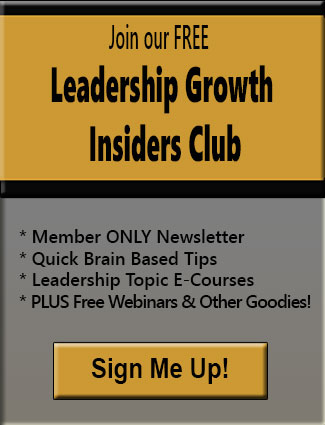Real Leaders Become Awakeners
Are You Ready To Make the Leap?
Your company is growing and has gained recognition and success. Your culture and employees are thriving and you are so proud of everyone’s accomplishments.
Yet …
you feel something is missing. You can’t put your finger on what. After all, it’s been a challenging journey. In many ways, you and your organization have arrived at its desired destination.
How could something be missing?
Guess what?
That gnawing feeling of something missing is a positive thing. It’s a sign your soul is stirring …
To something greater than your role and your company. To a grander purpose.
You are becoming an awakener.
In today’s ever increasing complexity and change, you are being called to operate at a new level of consciousness. To transcend your mission statement, competition and engagement practices.
Are ready to make that leap?
What Is a Leadership Awakener?
I am not a teacher, but an awakener.
Robert Frost
Most leaders’ roles and identities evolve. Let’s take a look at one natural progression of a leader’s role. Every role is important.
1. Coach
Traditional coaching focuses on behavior. The goal of a leader as coach is to improve the behavior of his/her team.
When leaders assume the role of coach, they are observing and giving feedback. For example – coaching someone how to communicate more respectfully to teammates.
2. Teacher
Teaching focuses on cognitive skills and capabilities.
A leader wearing the hat of teacher focuses on building competencies and thinking capabilities – such as how to read a P&L statement or presentation skills.
3. Mentor
Coaches and teachers focus on the external aspects of performance. Mentors, however, focus on the internal aspects – ie., employees’ beliefs and values.
A leader wearing the hat of mentor focuses on influencing a person’s beliefs and values in a positive way – such as, believing in him/herself.
4. Awakener
While awakening is definitely not a common term within organizations, leaders who operate at a high level of consciousness and being are the awakeners in the business world.
A leader as an awakener operates at the level of spirit or Higher Self. Such leaders have the capacity to transcend their own mental maps (beliefs, values, identity) and connect with a greater Force within themselves and others.
Leadership Awakeners are the Game Changers of the World.
Are you ready to make the leap?
Leadership awakeners think differently. Perceive differently. Decide differently. Here are 3 (among many) distinctions.
As an awakener …
You View the Organization as a Hologram
What the heck is a hologram?!
A hologram is a 3 dimensional representation created with the use of a laser using a process called holography.
 The fascinating property of holograms is that you can cut it up in tiny pieces and actually create the whole from a single part.
The fascinating property of holograms is that you can cut it up in tiny pieces and actually create the whole from a single part.
Not only does the whole contain all the parts. Every part contains information about the whole.
WOW!! Isn’t that mind blowing?!
The implications to an organization are huge! The concept of a hologram says that every function … every product/service … every employee contains within it information about your entire company.
Nelson Mandela used this principle in transforming South Africa. He knew that the greatest chance of unifying the country was not through a top-down approach of sweeping changes.
Rather, that unity (the whole) would come from his relentless support of the country’s all white rugby team (a part) in the World Cup. He rightly assumed that victory would unify the country. The rest is history.
Applying the holographic property can accelerate success within your company. Let’s look at 2 examples.
If you are like most leaders, you use a top-down approach in planning or envisioning your future. That is, you take the whole and you break it into parts. That approach has merit in certain contexts.
What if … with your next strategic plan, you instead take a bottoms up approach, using the holographic principle?
What if … you were to improve the weakest link in your organization (eg., competencies or efficiencies) and made that the focus of your strategic plan?
How would that one small change impact the performance of the entire organization?
How about applying the holographic principle to problem-solving?
What if … the next time your team solves a customer service or process problem, you focus on solving the bigger organizational issue – such as lack of cohesive teams?
What would that do to your profitability, productivity and quality?
You See Competition as an Illusion
In our Western culture, we obsess about beating our competition and becoming the best.
That obsession shows in our love for “Best ____” lists and awards. Fortune’s Top 100 Companies, 50 Best Places to Work for, Inc. 500/5000 and Top 40 Under 40 to name a few.
While competition can be a blessing, fueling higher standards and innovation. It can equally be a curse.
It conditions you to think in terms of winning and losing or a zero sum game. Those leaders who operate from a win/lose paradigm can’t see another way.
The truth is …
Competition is an illusion.
You will never win long term with this paradigm. However, there is a more optimal paradigm from which leaders can operate.
John Nash –- behavioral economist and Nobel Prize recipient – is best known for advancing game theory and the equilibrium principle.
In simple terms, his work showed that …
the best result comes when everyone in a group (team, market, etc.) does what’s best for themselves and for the group.
His findings say that when your company works TOGETHER with — not against – your “competitors,” you ALL will be better off than if you worked at cross-purposes with each other.
Example: Toyota and BMW have collaborated to create an environmentally friendly luxury car. They shared costs and knowledge for electric car battery research. BMW supplied diesel engines to Toyota. Everybody won, especially the customer.
How might collaborating with a competitor reduce delivery times and costs, open up new markets or strengthen your position rather than weaken it?
Below are additional resources and examples to delve further about collaborating with competitors.
Collaborate with Your Competitors … and Win,
Friendly Competition: Competitors Collaborate (video)
You Know That Perceived Limitations Are Wake-Up Calls
Stop for a moment. Take inventory of ways you and/or your organization …
· Struggle or effort
· Feel fear when your customers or the economy slow down
· Have hit a ceiling in growth, profits or performance
· Don’t have money or time for critical projects
Your perceived limitations are your own creation. Not consciously though. You are stuck in the limiting confines of your own thinking.
When you hit such limits, you tend to panic at the edge between the known and unknown. You fight for certainty and control. Yet more knowledge, analyses and busyness are NOT the answer.
To transcend these limitations, you must awaken to another reality. The world of Potentiality. The world of unbounded possibilities.
In this new awakened state, you tap into a greater Force within yourself and beyond yourself. You fear no challenge. You are immune to criticism. Self-power – or knowledge of Self — becomes your true source of power.
The question is … how do you awaken that part?
Here are 2 ways:
1. Practice “not knowing”
Exploring the unknown opens the door to unlimited creativity and possibilities.
Start with a question or concern. Let go of all knowledge, assumptions and ready answers. Adopt a beginner’s mind. Openness, curiosity, inquiry, reflection and learning are essential. Take time to explore what you don’t know. What new possibilities emerge from “not knowing?”
When practicing “not knowing,” you transcend fear of the unknown and engage in new possibilities. You are excited about opportunities the unknown presents.
2. Transcend your own mental maps
Your mental map are unconscious filters – beliefs, values, identity, etc. – that drive focus and perception. These maps ARE the boundary conditions of your thinking.
When I work with leaders, my first goal is to uncover their mental maps. Then change them to expand possibilities within themselves and then within others. Because there is no set procedure, there are no steps I can give you for that change.
However, even if it is for a few brief moments initially, you can learn to transcend your mental maps.
Get quiet. Go to that place within yourself where there are no fears. No limiting beliefs. No internal conflicts. Trust your higher Self to take you there. You will know you are there because you feel a sense of peace and ultimately pure silence. It’s from that place new possibilities emerge.
Summary
The ultimate calling of a leader is to awaken the grander purpose and possibilities within themselves and then their employees.
Becoming a leadership awakener is the highest level of consciousness from which you can lead. You transcend the mental maps, knowledge and expertise that limit your potential. You lead from a level of spirit that knows no boundaries.
Life and work take on new meaning. Struggles become a thing of the past. You are at peace even in the midst of turmoil.
The question is …
Are ready to make that leap?






